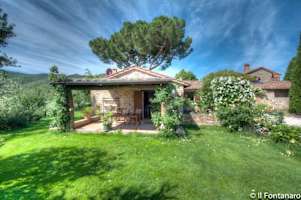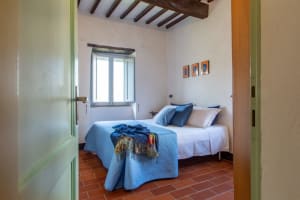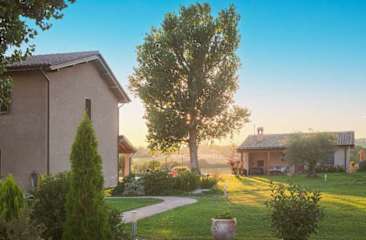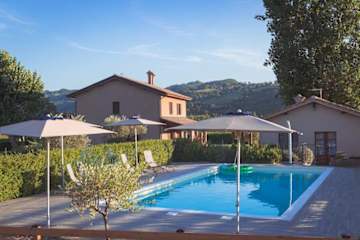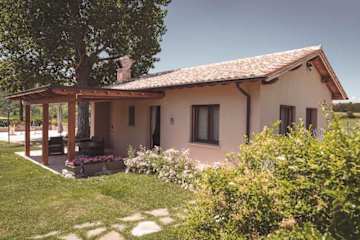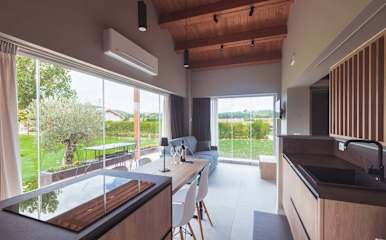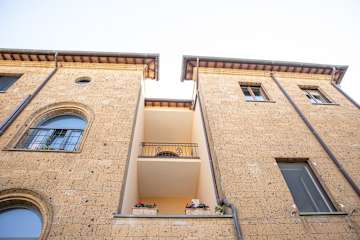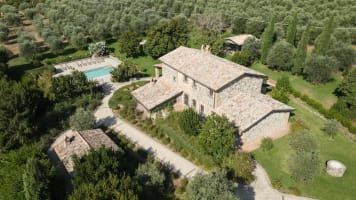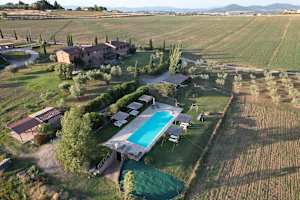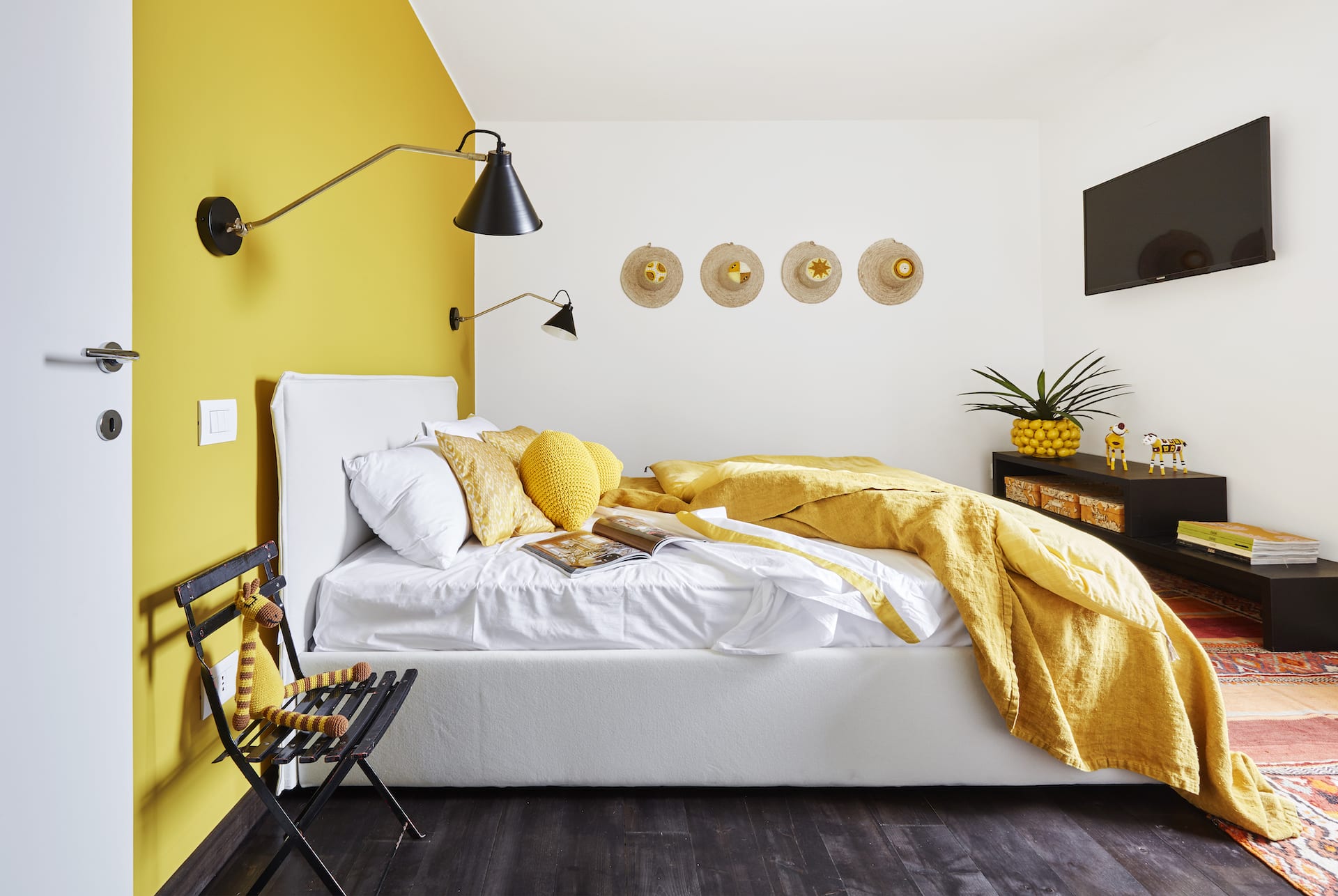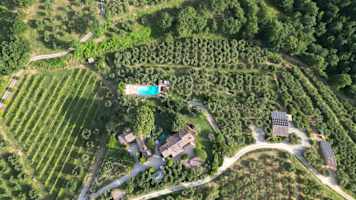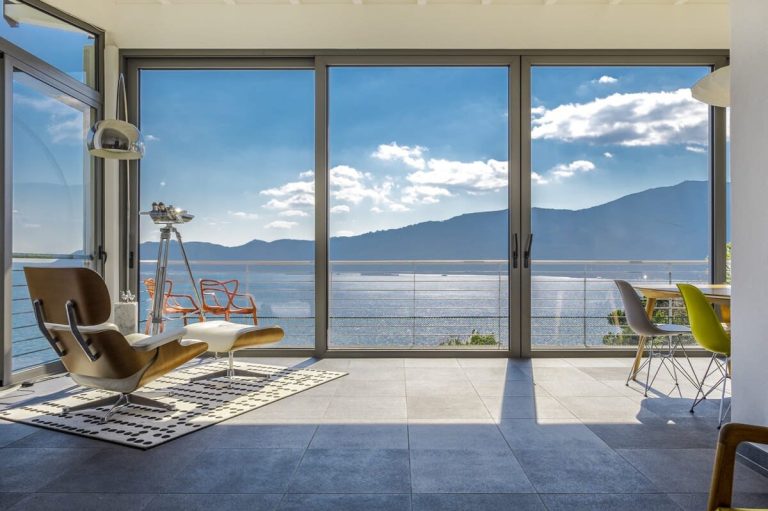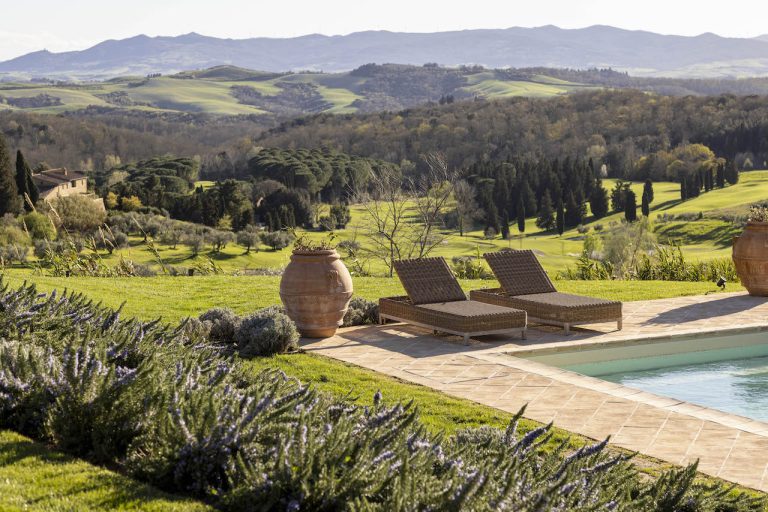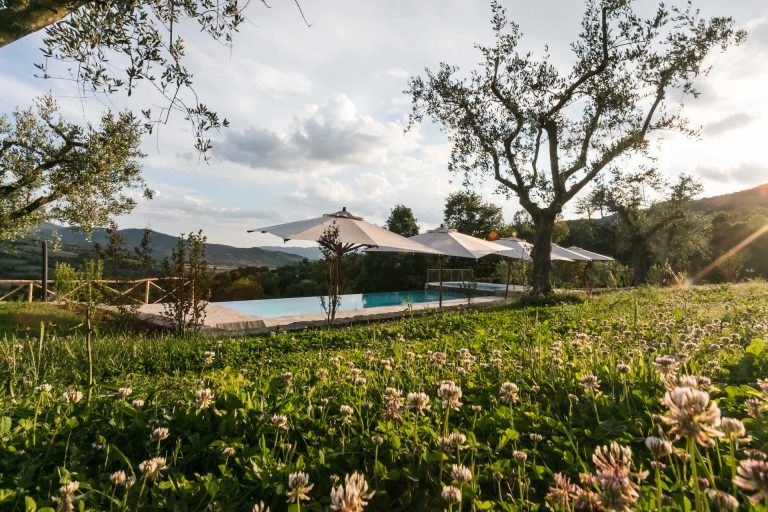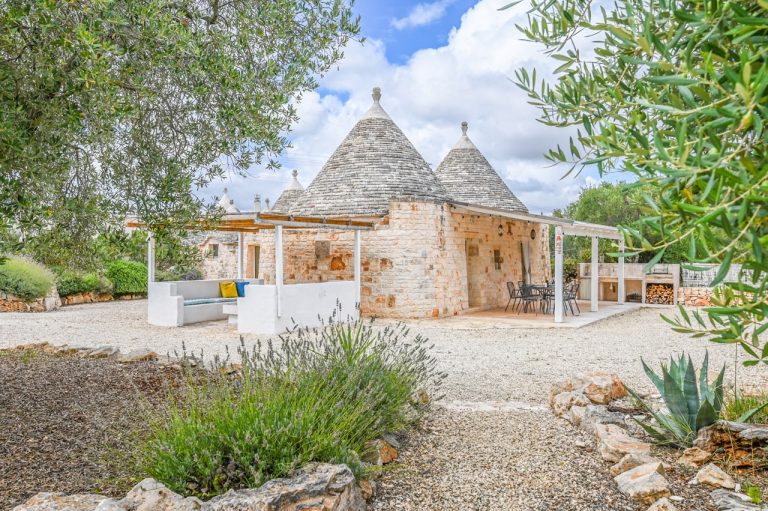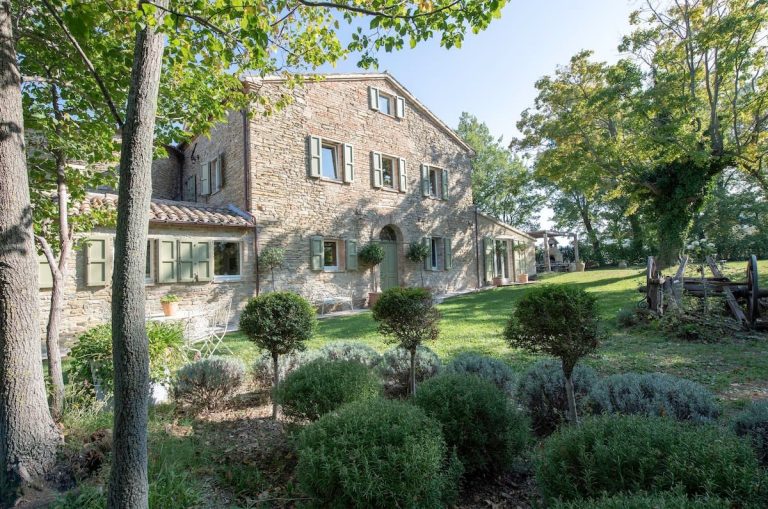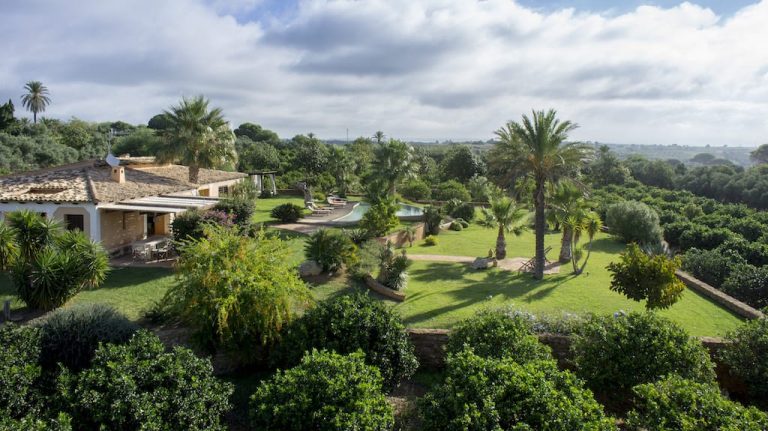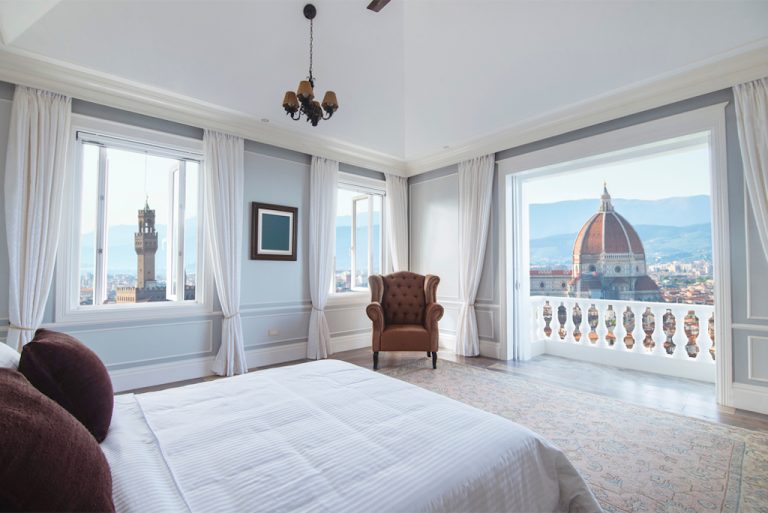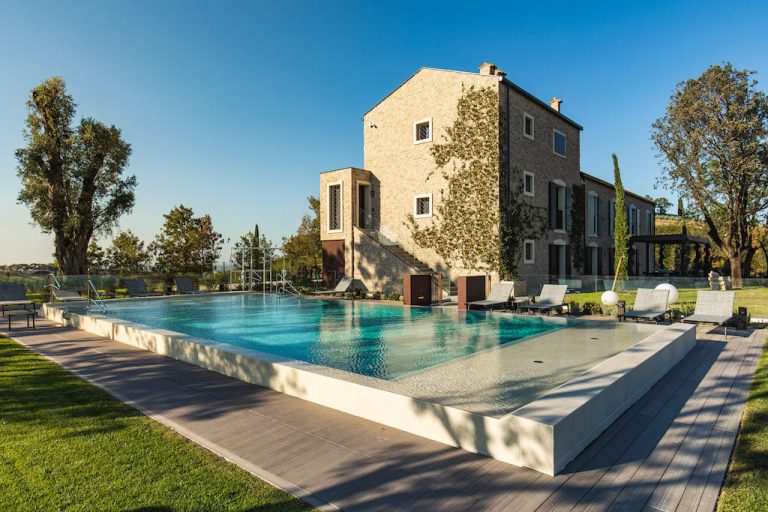Luxury Villas in Umbria
Close to Tuscany, Umbria is a charmingly authentic region in the centre of Italy. Known as the ‘green heart’ of Italy, it is just as beautiful as its more famous neighbour, Tuscany, but it tends to offer even better value for money. The region’s most famous city is Assisi but there are a whole host of other equally beautiful hilltop towns and villages to explore. These include Montefalco, Spello, Perugia, Orvieto, Trevi and Spoleto. And all of these are separated by the most idyllic scenery and rolling hills. We have a range of Umbria villa rentals available, from Umbria villas in the heart of the countryside to luxury villas in the heart of its hilltop towns.
Can’t find the perfect villa in Umbria? Get in touch with your requirements and we’ll send you our suggestions.
Refine and personalise your results
EXCELLENTTrustindex verifies that the original source of the review is Google. Cassina Rossa in Forte Dei Marmi was a perfectly located villa to enjoy all things Forte & truly feel like a local! The communication with the owner and her representatives was so easy and they were VERY helpful with anything we needed during our stay. We so enjoyed waking up every morning and either taking our coffee intown while it was super quiet and watching everything wake up around us or on most mornings we rode the bikes that were supplied to us to the wonderful market that was literally down the street and picked up anything we needed fresh for the day. The kitchen was beautifully equipped and we made espresso most mornings and either sat outside on ground level patio or on the roof top overlooking the mountains. It was comfortable enough to have lunch and dinner at home a couple of times and fun setting a beautiful table with their pretty dishes, linens, etc. Having Bagno Vasco the very authentic classic beach club included was a dream and a big savings! Great food, easy location to bike or drive to and the position of our chairs, umbrella and sunbed right next to the sea was great. We were there for over 2 weeks and for a nominal amount he supplied us with their towels each day so we didn’t have to bring back and forth. The villa’s proximity to the center of town can’t be beat. It’s quiet enough to be a bit removed and beautiful to see the mountains whenever walking or riding home but so close to all the wonderful restaurants & very upscale & unique shops. Forte has such a unique vibe day and night especially on market days (Wednesday and Sunday). The markets are so full of clothing, housewares, etc that you’ll need to bring an extra bag or ship stuff home. People come from everywhere to take advantage of it. The location of Forte Dei Marmi is so central and close to other towns like Pietrasanta up in the hills which allows you to experience a completely different more typically Tuscan area within a short 15-20 min drive and it’s also very close to Lucca, Pisa & Carrara (where they get the marble) only 1 1/2 hours from Florence and Portofino if you are staying longer and want to take some wonderful daytrips. Forte Dei Marmi doesn’t have the dramatic coastline of the Amalfi coast but the beauty of looking one direction and seeing the beaches and looking the other and seeing the stunning mountains including Carrara is truly unique and offers its own special beauty. Another plus is that it is very flat so much easier than many Italian towns to walk and ride bikes which everyone does everywhere. It’s fun to see everyone (mostly Italians which we loved) fully dressed for dinner on bikes as it’s truly the chosen form of transportation for the young and old. We can’t wait to return!!Trustindex verifies that the original source of the review is Google. Jo at Bookings for You is absolutely wonderful to work with. We have booked properties in Sorrento and Sicily over the past two years (2022 & 2024) and have not been disappointed. The properties were 1st class and just phenomenal. Jo lists only the best based on; location, amenities, condition & cleanliness. I highly recommend Bookings for You when planning & booking your stay in Italy; you won't be disappointed. First class service and first class properties!Trustindex verifies that the original source of the review is Google. Great service , prompt and efficient responses to enquiries . Villa was just what we wanted for a family holiday , and Fiona was a great asset ! ThanksTrustindex verifies that the original source of the review is Google. We have just spent a fabulous week in Villa Speracedes booked with Bookings for You. Bookings for You provided excellent communication with us both prior to and during the trip to ensure that everything ran as smoothly as possible for us. The apartment was great: comfortable, very well equipped and the terrace was fabulous with a seating area for meal times, comfortable loungers to relax on and down the steps, loungers beside the pool. All having magnificent views across the valleys. Highly recommended!Trustindex verifies that the original source of the review is Google. Fabulous stay in Villa Assisi - a big villa with private pool in a hotel resort complex. It was very peaceful, despite a very central location, and the pool was a fantastic luxury given the super-hot temperatures. We were able to use the hotel facilities, such as the tennis court and bicycles, as well, so it felt like the best of both worlds. We were well looked after by Bookings for You too. Highly recommended.Trustindex verifies that the original source of the review is Google. An amazing place. Had such a great stay with my family and the hosts were so helpful all along. Thank you!Trustindex verifies that the original source of the review is Google. The villa is Beautiful. The staff wonderful especially the chef and Benne. Daniela is a wonderful host. Our family had a wonderful time Thank youTrustindex verifies that the original source of the review is Google. Absolutely fantastic from start to finish! We had the most amazing holiday at Golfo Gabella on Lake Maggiore and will definitely be rebooking for next year 😊
Towns & Cities in
Parent region italy not found.
About Umbria
Landlocked Umbria sits to the east of Tuscany, to the west of Marche and to the north of Lazio. It can claim to be the only region of Italy that does not share a border with either another country or the Italian coastline. It is probably best known for being the birthplace of St Francis and certainly many make the journey to Assisi for that reason. But its capital, Perugia, is also well worth the journey.
Cities, towns and villages in Umbria
Whilst Umbria’s cities can not claim to be as well-known as those in neighbouring Tuscany, don’t for a minute think that this means they’re not as worthy of a visit. Far from it.
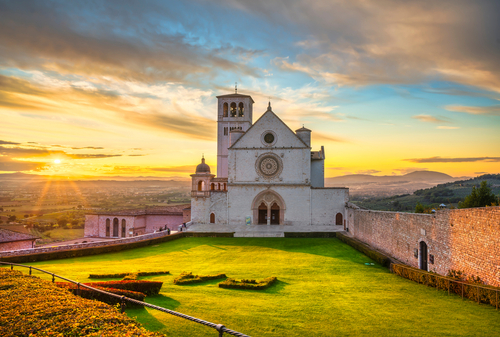 Perugia has much to recommend it to visitors, not least its annual calendar of events which include Umbria Jazz and Eurochocolate, a 10 day festival dedicated to this popular sweet stuff! And Assisi is one of the best preserved Medieval towns in the world. The Basilica di San Francesco is the first on most visitor’s lists of things to do in Assisi but also not to be missed is the Rocca Maggiore, a castle perched at the city’s highest point, and the Santa Maria Sopra Minerva amongst other things.
Perugia has much to recommend it to visitors, not least its annual calendar of events which include Umbria Jazz and Eurochocolate, a 10 day festival dedicated to this popular sweet stuff! And Assisi is one of the best preserved Medieval towns in the world. The Basilica di San Francesco is the first on most visitor’s lists of things to do in Assisi but also not to be missed is the Rocca Maggiore, a castle perched at the city’s highest point, and the Santa Maria Sopra Minerva amongst other things.
The smaller towns and villages in Umbria are also a delight to visit. Our favourite has to be Spello, but others worth a visit include Spoleto, Orvieto, Trevi, Todi, Montefalco, Bevagna, Foligno and Norcia.
Find out more in our A to Z guide to the towns and villages in Umbria.
Things to do in Umbria
Of course, first on our list of things to do in Umbria is to explore its beautiful hilltop towns and villages. However, there are plenty of other things to keep you busy, most making the most of Umbria’s rural backdrop. For example, Umbria is home to the Cascate delle Marmore. At 165 metres high and dating back to Roman times, this is the second tallest waterfall in Europe and the largest man-made waterfall in the world.
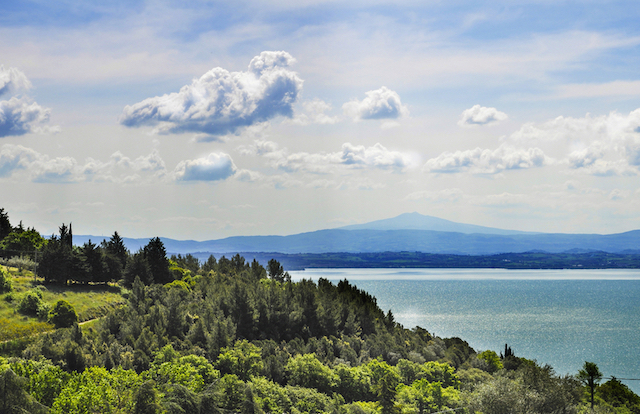 Umbria is also great hiking country. It can boast a number of parks including the Monte Cucco Regional Park, the Monte Sibillini National Park, the Monte Subasio National Park and the colourful plains of Castelluccio di Norcia. Visit in the Spring or early Summer to witness the incredible blanket of wild flowers that covering these plains. And, of course, you can always opt for a faster pace and either cycle or head out on horseback around the Umbrian countryside instead.
Umbria is also great hiking country. It can boast a number of parks including the Monte Cucco Regional Park, the Monte Sibillini National Park, the Monte Subasio National Park and the colourful plains of Castelluccio di Norcia. Visit in the Spring or early Summer to witness the incredible blanket of wild flowers that covering these plains. And, of course, you can always opt for a faster pace and either cycle or head out on horseback around the Umbrian countryside instead.
And, whilst Umbria may be landlocked, it doesn’t mean you can’t still enjoy a day at the beach. Lake Trasimeno is only marginally smaller than Lake Como but is far less well known. However, it can boast a number of beaches and also offers the opportunity to enjoy non motorised water sports.
Our guide to the top 60 things to do in Umbria will ensure the whole family are entertained during your next Umbria holiday.
When to visit Umbria
There isn’t a bad time to visit Umbria. Spring is certainly the most colourful time to discover Umbria. This is when you will be treated to fields and meadows awash with the vibrant colours of wildflowers. And, with the exception of Easter, when you will find pilgrims making their way to Assisi, you’ll find visitor numbers relatively low. It’s a great time for a walking trip and a superb time to discover Umbria’s hilltop towns and villages. July and August are the busiest, warmest and sunniest months in Umbria. This is a great time to visit Umbria if you’re looking to combine lazy days by the pool with some time sightseeing. Even in peak season, you don’t even need to worry about the crowds in Umbria in the same way as you would in the Tuscany’s cities. Umbria sees a tenth of the visitors that its busier neighbour does. As September comes and Autumn draws in, it’s a great time to get more active again in Umbria. Walking and cycling are popular at this time of year. And there are plenty of festivals to get involved in. Not forgetting this is now truffle season too. And we would definitely recommend a visit to Umbria in the Winter time too. Yes, the towns and villages will be much quieter and you’ll need to wrap up warm. But December will bring plenty of charming festive markets whilst January and February will be a time to mix with the locals, enjoy the hearty food and get absorbed in Umbria’s cultural scene.
Frequently Asked Questions
How long should I stay in Umbria?
A week in a villa in Umbria will allow you time to explore the main towns and villages. However, if you have fewer days to spend there, you can still get a good taste for the region in just 3 or 5 days. We do recommending spending a week or more there if you can though. Unlike Tuscany, Umbria is not a region of ‘must-see’ sights. It doesn’t have the bucket list cities – Pisa, Florence or Siena for example – that Tuscany has. However, it still has plenty of see. But it has a charm that needs to be discovered at a slower pace. Spend between 7 and 14 days at one of our Umbria villa rentals and, as well as visiting the main cities – Assisi, Orvieto, Spoleto and Perugia – you can also stop and explore some of the smaller towns. These include our favourite, Spello, as well as Montefalco, Bevagna, Gubbio and Todi. A longer stay means you will also have time to marvel at Umbria’s idyllic countryside which incorporates the impressive Marmore Falls and the breathtaking Monte Sibillini National Park.
Do I need a car in Umbria?
No, a car is not always necessary. We certainly have Umbria villa rentals in the heart of towns and within easy reach of public transport. These include our villas in Spello. Nevertheless, we do recommend guests hire a car in Umbria if they can. Whilst Umbria’s main towns – Perugia, Orvieto and Assisi – are easily accessible by train, a car provides much more flexibility and convenience to reach some of the smaller towns and villages. Buses will link these small places but, even in peak season, the schedules are quite restrictive.
Should I stay in Umbria or Tuscany?
If you are able to do so, definitely visit both! Tuscany is certainly the more well-known of the two regions. It attracts seven times as many holidaymakers each year and our luxury villas in Tuscany are incredibly popular. However, whilst Tuscany’s landscapes and cities are iconic, we think Umbria is just as beautiful and offers a quieter, more off-the-beaten path experience. You will typically find Umbria less crowded than neighbouring Tuscany and the pace a little slower. Umbria is synonymous with the slow travel movement, an approach that focuses on connections with people and culture. A stay in a villa in Umbria is an opportunity to enjoy an authentic holiday in Italy and to truly submerge yourself in what the country has to offer.
How do I get to Umbria?
Direct trains go from Rome to Orvieto (1 hour and 15 mins) or to Spoleto (1 hour and 45 minutes). And you can also catch a direct train from Florence to Perugia or Orvieto. If coming by car, take the main north-south highway (A1) which runs along the western edge of the region. Of course, you can also reach your Umbria villa rental by plane. Umbria does have its own airport – San Francesco di Assisi Airport (PEG) which sits just to the east of Perugia. It tends to be low cost airlines that fly into here. Otherwise, you can also opt to fly into Rome – it’s less than a 2 hour drive from Rome airport to the Umbrian border. Or, in the other direction, Florence is less than 2.5 hours by car to Gubbio in northern Umbria.
What are the must-see towns in Umbria?
Umbria’s busiest city is Assisi which attracts thousands of pilgrims each year thanks to its connections with Saint Francis. Perugia is Umbria’s capital city though. It is also well worth a visit during your Umbria villa holiday. However, we particularly love the smaller towns and villages in Umbria. Top on our list of must-see towns in Umbria are Bevagna, Gubbio, Montefalco, Orvieto, Norcia, Passignano sul Trasimeno, Todi, Spello and Spoleto. And whilst Foligno is often missed from people’s itineraries, we think it’s still worth a visit despite suffering extensive damage in WWII.
What are the top activities to do in Umbria?
Umbria is a region to explore slowly. Of course, no Umbria villa holiday would be complete without ticking off Umbria’s beautiful towns and villages. However, its countryside must also be enjoyed. Visit the Marmore Falls, Europe’s second tallest waterfall and the largest man-made waterfall in the world. And head deep into the Sibillini mountains to witness the spectacle of wildflowers each Spring and Summer. Make the most of Italy’s ‘green heart’ as Umbria is affectionately referred to by hiking, cycling or even white water rafting! Whilst you explore, make sure you take the time to sample Umbria’s incredible culinary heritage. And, finally, whilst Umbria is land-locked, it doesn’t mean you still can’t enjoy a day at the beach. Head to Lake Trasimeno and you will find a number of lakeside beaches where you can sunbathe and even try your hand at water sports.
Is Umbria family-friendly?
The whole of Italy is family friendly and Umbria is no exception. With so many things to do in Umbria, there is plenty to entertain all ages.
Can you enjoy wine tastings in Umbria?
Definitely! Umbria is famous for its wine. The most famous of these are the white Grechetto wine and the red Sagrantino and Sangiovese wines. There are plenty of wineries where you can enjoy tastings. And in fact, Umbria even has a museum dedicated to wine making in Torgiano. Of course, we can also help organise a wine tasting in the comfort of your chosen Umbria villa.
What food should I try in Umbria?
Umbria’s cuisine celebrates local, seasonal produce. Expect to see plenty of truffles, wild boar and porchetta (stuffed roast pork) on the menu. The town of Norcia is also famous for its salumi. When it comes to pasta, Umbria’s most famous pasta is strangozzi. And when it comes to sweet treats, expect to see plenty of chocolate. Perugia is home to baci chocolates and hosts a chocolate festival each year.







